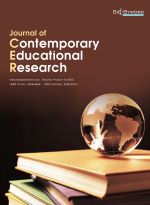Abstract
Emotion is a complex and abstract experience shared by human beings, but it is often expressed in the form of conceptual metaphor which is pervasive in the concrete language. Drawing upon the theory of conceptual metaphor and emotion metaphors, this paper aims to study the translation of positive emotions in David Hawkes’ version of The Story of the Stone and the related daily expressions as the corpus. According to the theories, this paper categorizes the positive emotions metaphors into body metaphors, sensory metaphors, entity metaphors, and orientational metaphors to discuss the process of English translation and the metaphorical mechanism, analyzes the similarities and differences between Chinese and English expressions of positive emotions and their cultural, physiological, and psychological motives, and lastly attempts to summarize the translation strategies of emotional expressions. The analysis of metaphorical mechanisms reveals that the common physiological and psychological experiences of human beings and cultural exchanges give rise to similarities, while the unique cultural environments, antecedents, and historical development of each nation give rise to their distinctiveness. This paper concludes that translators need to make full use of their subjectivity, understand the surface and underlying meaning of the text, and establish a high level of mental compatibility between themselves, the readers, and the author.
References
Schmitz L, 1976, Embodiment and Situation: Charles Taylor’s Hegel. The Journal of Philosophy 73(19): 710–723.
Baumgarten-Tramer F, 1950, “Gratefulness” in Children and Young People. Journal of Genetic Psychology, 1950(53): 53–66.
Eysenck HJ, 1983, I Do: Your Guide to a Happy Marriage, Century, London.
Bally C, 1909, Traité de Stylistique Française, C. Winter, Heidelberg, 16.
Lakoff G, Johnson M, 1980, Metaphors We Live By, University of Chicago Publisher, Chicago.
Murry J, 1922, The Problem of Style, OUP, Oxford.
Solomon R, 1995, The Cross-Cultural Comparison of Emotion, in Emotions in Asian Thought: A Dialogue in Comparative Philosophy, State University of New York Press, Albany, 253–308.
Cao Y, 2007, The Composition of Emotional Narrative Phrases in The Story of the Stone. Studies on “A Dream of Red Mansions,” 2007(02): 203–222.
Li Y, 2009, The Study of Emotional Category Synomorphemes in Parallel Compounds, dissertation, Jilin University.
Liu J, 2009, Emotional Linguistics in Russia. Social Sciences Abroad 2009(02): 34–39.
Ma J, 2009, Proposed Establishment of Translation Academy, in Translation Essay Collection (Revised), Commercial Press, Beijing.
Liu M, 1987, On the Skill Consciousness of Translation. Chinese Translators Journal, 1987(05): 7–11.
Weng X, 1982, Imagery and Sound Rhythm–Talking About Poetry Translation. Chinese Translators Journal, 1982(06): 34–38.
Xu J, 2003, Creative Treason and the Establishment of Translational Subjectivity. Chinese Translators Journal, 2003(01): 8-13.
Bao Z, 2003, A Contrastive Study of the Linguistic Expression of Emotions Between English and Chinese, dissertation, Fudan University.
Shang C, Leng H, 2021, An Emotion–Focused Analysis of the English Translated Diplomatic Discourse from the Perspective of Emotional Intelligence. Journal of Qiqihar University (Philosophy & Social Science Edition), 2021(02): 142–145 + 149.
Lin W, 2009, Mythological Interpretation of “Culture of Joy” and “Culture of Sin.” Social Science Research, 2009(06): 183–187.
Cao X, Gao E, 1979, The Story of the Stone, People’s Literature Publishing House, Beijing.
Hawkes D, Minford J, 1973, The Story of the Stone (Vol. II), Penguin Publishing Group, London.
